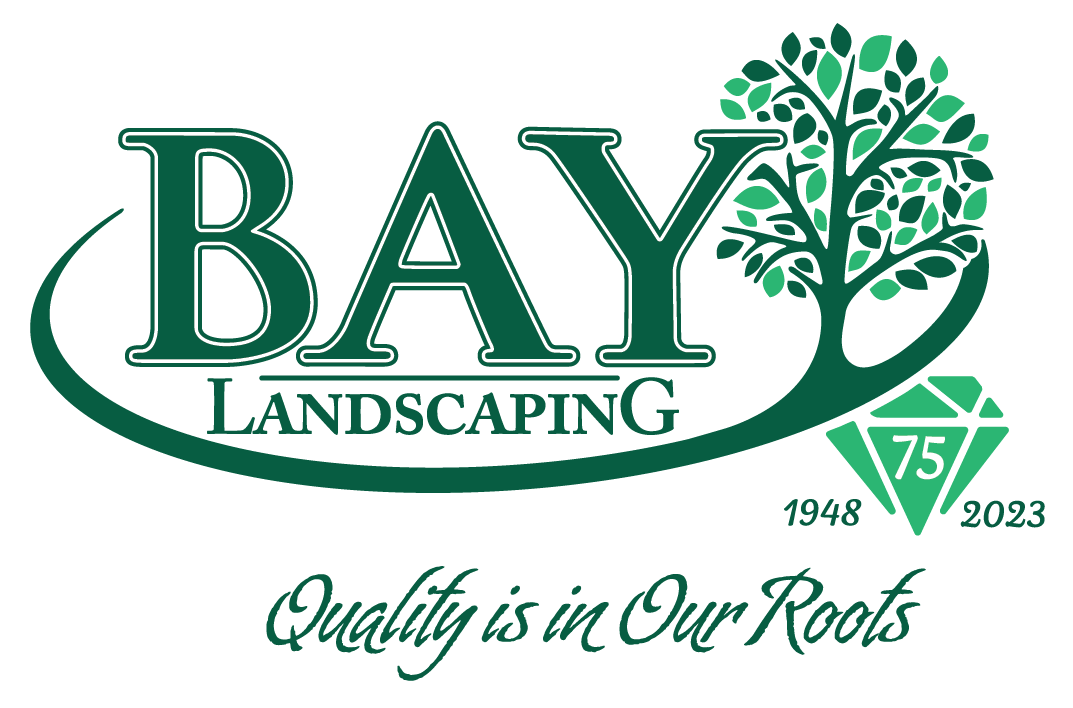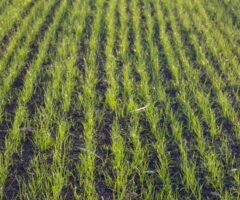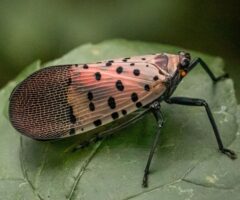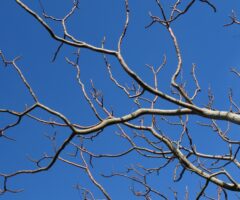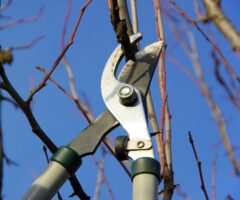As soon as the temperatures rise and the days get longer, homeowners everywhere feel the itch to start working on their lawns. The grass looks tired, the weeds are lurking, and that bag of weed and feed sitting in the shed promises to fix it all.
But when it comes to pre-emergent weed control, applying it too early can do more harm than good – not to your lawn, but to your results. At Bay Landscaping, we time our treatments based on science, not the calendar. And that often means waiting until May.
How Weed and Feed Helps Lawns
Weed and feed products combine two lawn care essentials into one application:
- Fertilizer to encourage healthy grass growth.
- Weed control to manage unwanted invaders.
But not all weed and feed products are the same – it’s the herbicide that makes the difference. Understanding which type is in the bag matters mor than most people realize.
There are two main types of weed control:
Pre-Emergent Weed Control
- Prevents weeds from sprouting in the first place
- Works by creating a barrier just below the soil surface
- Best for stopping grassy weeds like crabgrass
- Needs to be applied before the weeds germinate
Broadleaf (Post-Emergent) Weed Control
-
- Kills weeds that are already growing
- Absorbed through leaves and targets established weeds
- Commonly used for dandelions, clover, and other broadleaf weeds
- Best applied when weeds are young and actively growing
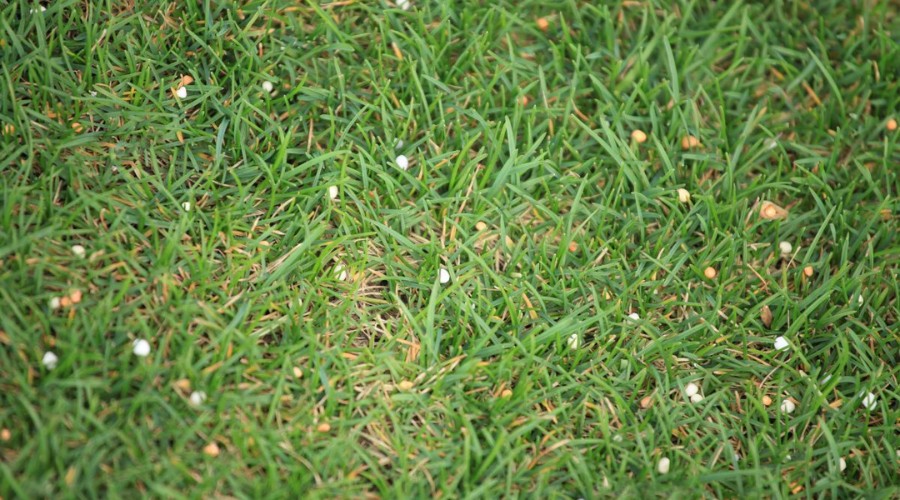
When to Apply Weed and Feed (And Why We Wait Until May)
You’ve seen the bags stacked at the front of the store – almost like they’re screaming at you to take one home and get to work. But when it comes to pre-emergent weed and feed, resisting that urge pays off. Timing it right in May gives your lawn the protection and results those bags promise.
Don’t Trust the Weather – Trust the Soil
One of the biggest mistakes we see homeowners make is using air temperature as a signal to start lawn care. But when it comes to weed prevention and healthy grass growth, soil temperature is what really matters.
Most weed seeds – including crabgrass – begin to germinate when the soil consistently reaches around 50-55 degrees Fahrenheit. At that point, plants are waking up, microbes are more active, and grass is ready to absorb nutrients. Applying a pre-emergent herbicide before this threshold is met means the product starts breaking down before it can actually do its job – leaving your lawn exposed when crabgrass shows up a few weeks later in the season when your turf really needs the help.
Pro Tip: We don’t guess when that window hits. Instead, we use the GDD Tracker 4.0 from Michigan State University, which uses growing degree days to provide a scientifically accurate picture of when crabgrass is ready to germinate in your specific area.
In most parts of Mid-Michigan, this window doesn’t arrive until late April or May, despite what a few warm days in March might lead you to believe.
Early Isn’t Better
Pre-emergent herbicides work by forming a barrier in the soil that stops new weed seeds from sprouting. That’s why it’s crucial to apply them right before weed germination begins – not weeks earlier or after the fact.
By waiting until May, we hit that sweet spot: just as crabgrass is ready to emerge – but not yet active – giving your lawn the best protection without wasting product or effort.
Michigan Spring Is a Wild Card
If you’ve lived in the Great Lakes Bay Region long enough, you know one thing is certain: spring is anything but predictable. One week it’s 65 and sunny, and the next we’re getting a frost advisory or a downpour.
This kind of volatility wreaks havoc on early lawn care:
- A sudden cold snap can stall soil warming, delaying weed germination even further.
- And even though your grass may look hungry for nutrients, turfgrass naturally greens up in spring with no input – just sun, soil, and biology.
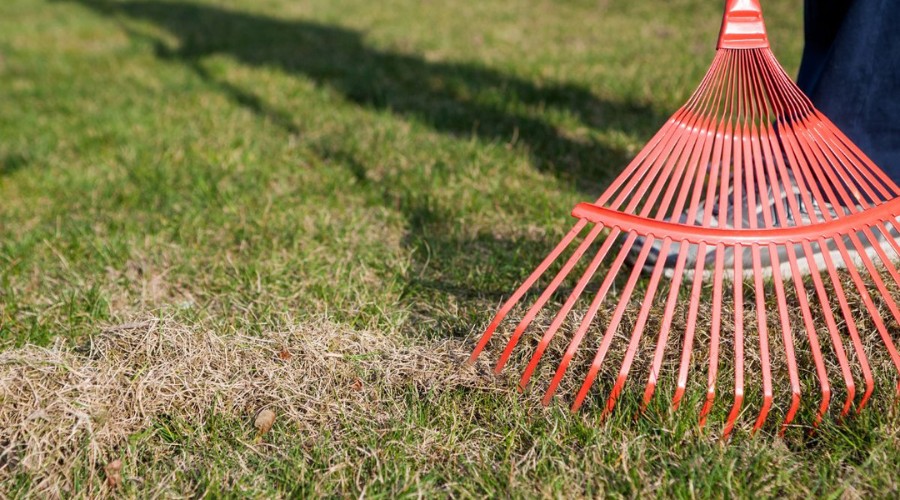
What You Can Do in Early Spring
Just because it’s too early for pre-emergent weed and feed doesn’t mean you have to sit on your hands. There are a few but valuable things you can do in early spring to help your lawn recover from winter and prepare for the growing season.
Light Raking & Debris Pickup
Start with a gentle cleanup – nothing too aggressive. Use a leaf rake to clear out leaves, twigs, and any other debris from winter storms.
Soil Testing (If You’re Having Issues)
Soil testing isn’t a must for every lawn, but if you’re noticing strange patterns like poor growth in certain spots, yellowing grass, or chronic issues year after year, a test can help pinpoint nutrient deficiencies or pH imbalances. It’s a great diagnostic tool when you’re not sure what’s going wrong.
Core Aeration
If your lawn feels hard underfoot or tends to puddle after rain, early spring is a good time to consider core aeration. Aerating relives soil compaction, combats thatch that may have built up, improves air and water movement in the root zone, and helps your lawn take in nutrients more effectively.
Rely on Bay Landscaping for Perfectly Timed Lawn Care
The secret to a healthy, weed-free lawn isn’t working harder – it’s working smarter. By holding off until May to apply pre-emergent weed and feed, you’re giving your lawn exactly what it needs, exactly when it needs it. And when you combine that with smart early spring yard work – like raking and aeration – you’re setting yourself up for success all season long.
Not sure when to apply or what your lawn really needs this spring? Request a quote or call Bay Landscaping today at 989-893-0000 – our team is here to help your lawn thrive, from the first treatment to the last mow of the season. We will never try to sell you anything your lawn doesn’t need.
